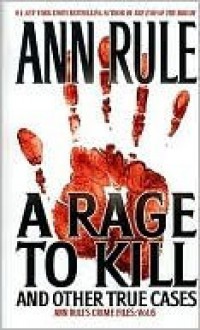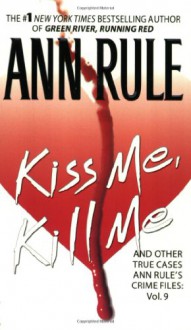
So this collection didn't do a lot for me. Probably because "A Bus to Nowhere" left a lot of answers that would never be answered fully and it was not a great story to start off with. Most of the stories had no common theme among them besides murders. Usually Rule tries to stick to a theme in her stories and I guess she went with rage. But I didn't read rage in some of these stories.
A Bus to Nowhere (3 stars)- Rule looks at the bus crash that took place in Washington state in 1998. The man behind it who ended up shooting the driver and causing dozens of injuries and damage appeared to be mentally ill. Rule at times seems to deride him though and makes it seem as if his parents should have done more. I didn't get rage here at hill, it read to me that the man was mentally ill and lost his grip with reality based on the stories that went about him later on (with him harassing bus drivers).
The Killer Who Planted His Own Clues (3 stars)-Once again I didn't get rage here at all. A young man stalked and murdered a school teacher (Sharon Mason). The police figured out who killed her pretty quickly and he was locked up. You definitely feel sorry for Mason and her elderly parents.
Born to Kill? (5 stars)-This is probably the first story that I thought had any semblance to the theme of rage. The murderer in this story, Michael Andrew Olds seemed destined to hurt other people. A child of rape, he was an angry baby who grew up to be a sullen teen who murdered a woman when he was robbing a story. When Olds is released after serving his sentence (he was 18 when he went away, 31 when he was released) he started robbing and murdering again after a short period of being married. Olds goes cross country kidnapping and murdering before being apprehended in Pennsylvania.
As Close as a Brother (3 stars)-Sad story of two young girls who were murdered. Bernie Pierce appeared to be a friend, but when he drank it appeared he turned into someone else.
Profile of a Spree Killer (5 stars)-Rule goes into the life and crimes of Christopher Wilder who went on a spree killing in the late 1970s. What a sad story about a man who abducted and murdered young women over a period of weeks. Some of the families never did find out what happened to their daughters and their bodies were never found. I have never heard of this guy before reading this story though so found myself curious about him to later go on and Google him.
The Lost Lady (1 star)-Looking into the disappearance of Marcia Moore. I don't know why Rule includes so-called psychic's premonitions in her books. She includes two in here about what happened to Marcia Moore, but they were not correct so I was just baffled about why they were included. Rule doesn't seem to be blaming the husband at times, but at other times she does.
To an Athlete Dying Young (3 stars)- Story of Jane Costantino who was murdered by a man who had fantasies about forcing a woman to be his sexual slave.
Ruby, Don't Take Your Love to Town (4 stars)-A woman who does her best to move on from her husband after she finally has enough is murdered in front of her young daughter. Most of the stories Rule tells are about battered women who even though they do everything right, are still murdered by those who swore to love, honor, and cherish them.
That Was No Lady (3 stars)-Sad story about a young man who is killed by a woman (yeah I said woman). I didn't like Rule's tone in this one. She made it seem as if the woman known as Jackie Emerson (born a male) was just acting as if she was a woman and didn't identify as such. This became important when it was going to be determined to what jail Jackie would be sent to (men or women's prison).
The Killer Who Talked Too Much (4 stars)-A woman named Marcia Perkins is found dead. What I found sad about this whole story is that the man who did it goes on to murder someone else while the police are still investigating Marcia's case. I am still confused about why he wasn't picked up since all evidence pointed to him. I was sad to see the jury came back and found the man not guilty of Marcia's murder, but of the second woman's (Jeanie Easley).


 Log in with Facebook
Log in with Facebook 


![The I-5 Killer, Revised Edition by Ann Rule [MassMarket(1984/3/1)] - Ann Rule The I-5 Killer, Revised Edition by Ann Rule [MassMarket(1984/3/1)] - Ann Rule](http://booklikes.com/photo/max/220/330/upload/books/9/c/9cea831451b28877f319de1ca780a505.jpg)





